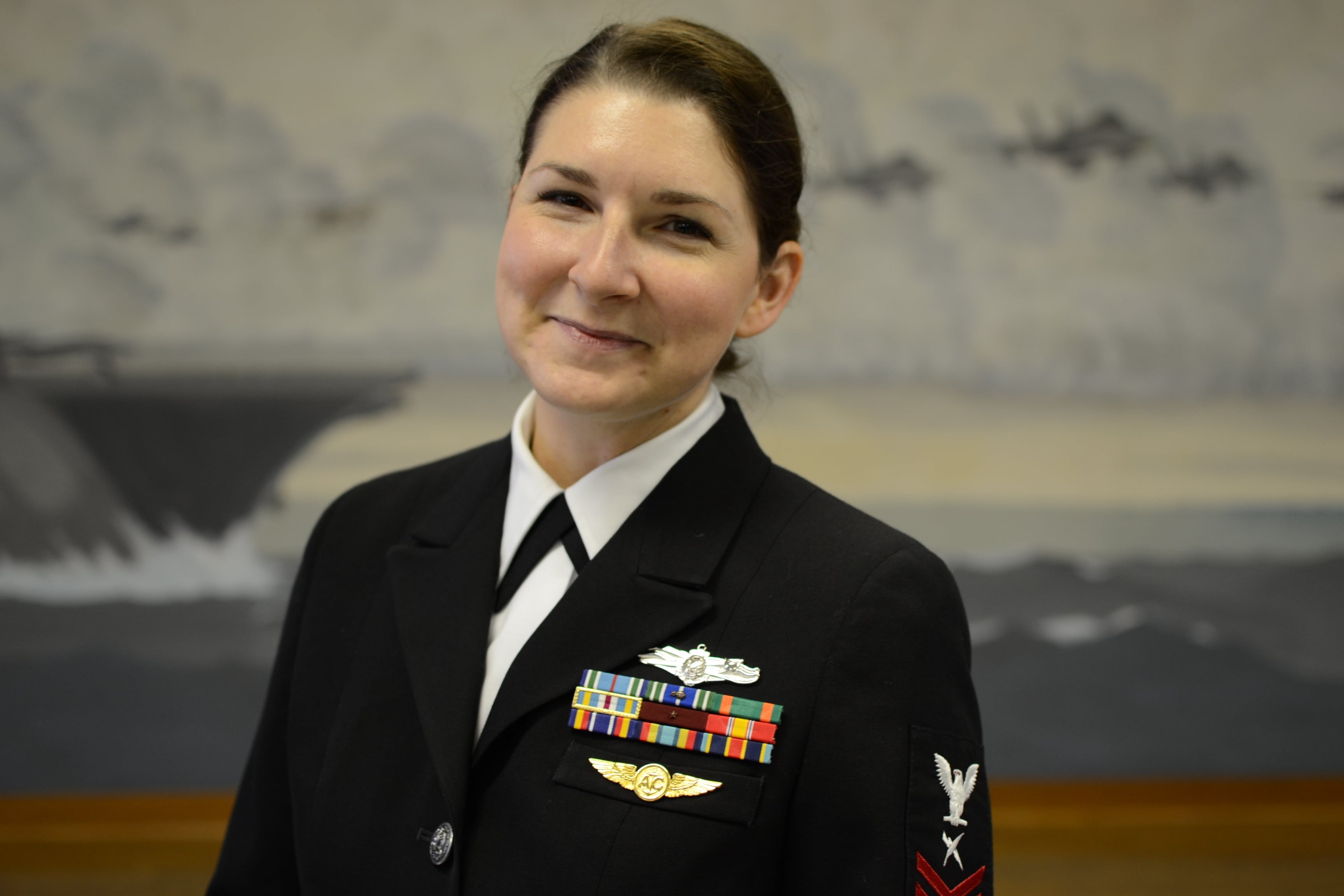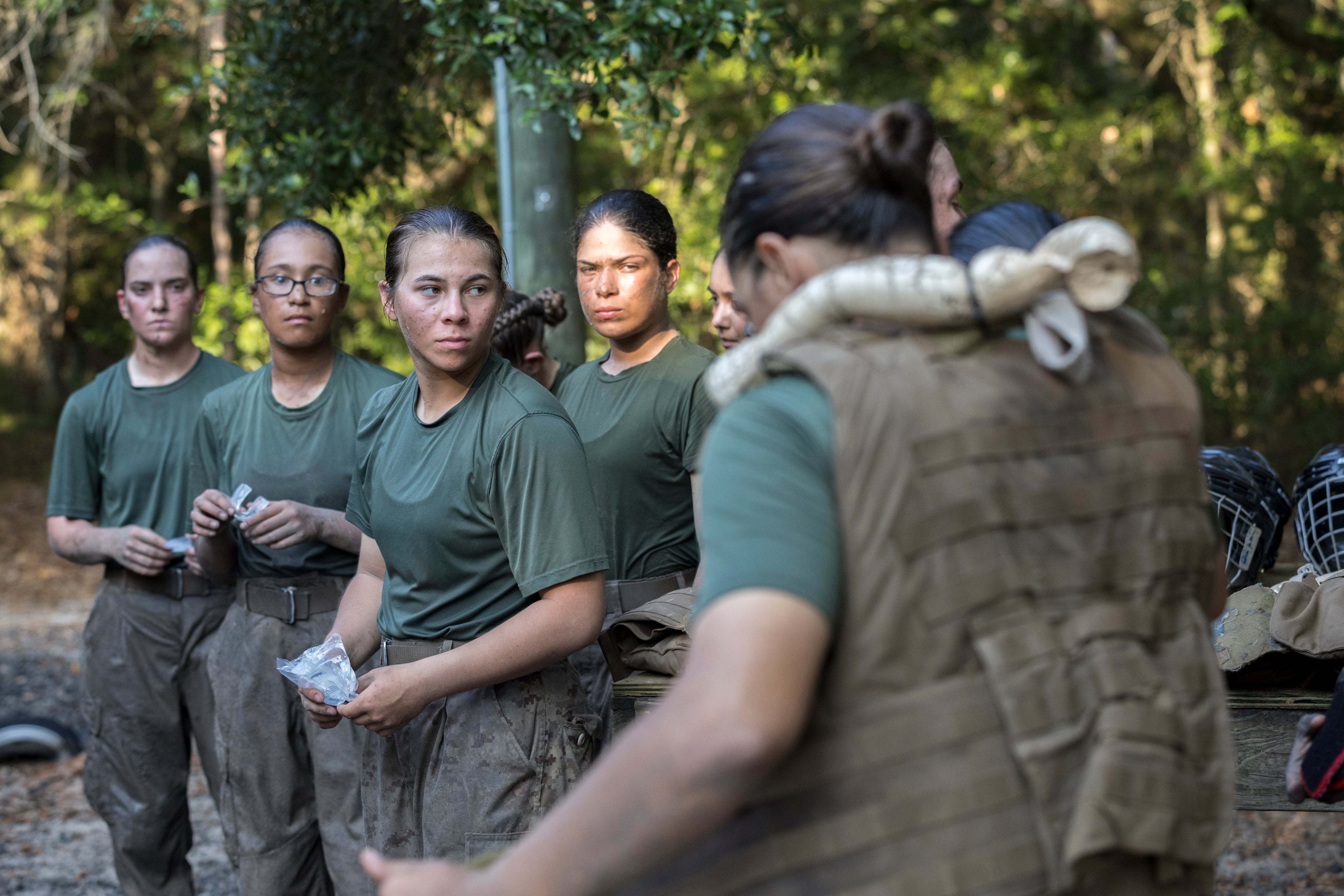New rules designed to standardize and strengthen the process to earn one of the newest enlisted warfare pins will also allow thousands more sailors to qualify for the chest candy.
The Enlisted Information Dominance Warfare Specialist program will reduce the number of commands that can qualify sailors, but open it to thousands more at those commands, which have supervisors in the IDC ratings to oversee the quals process.
What you need to know:
1. Who qualifies. The EIDWS is the primary qualification for the aerographer's mates, cryptologic technicians, intelligence specialists, and information systems technicians ratings.
But under the new rules, sailors in non-IDC ratings at in those commands can now earn the pin, but IDC sailors assigned to other commands will have to wait to qualify.
2. Rule changes. "There were a lot of different interpretations of the rules on obtaining the qualification, and a lack of standardization," said Navy Information Dominance Forces' Force Master Chief Toby Ruiz, who led the effort.
The changes, which were in the works when he took the post in January, have "standardized who is authorized to administer [the program], and we have standardized the timelines to ensure people who are trying to get their qualifications do so in a timely manner," he said.
Nearly 150 commands had an EIDWS program, and officials admit there were inconsistencies. There also were problems with the "reasonable access policy" that allowed sailors on non-authorized platforms to become qualified on one that offered the program. Tracking those sailors proved not worth lackluster, especially large-deck platforms, and "it appeared a lot of sailors on non-platforms were spending more time on larger platforms than necessary," Ruiz said.
3. Eligible commands. The revised instruction restricts the EIDWS program to commands that have leaders in the IDC ratings that can oversee the qualification process. That list includes the fleet's largest crews: aircraft carriers and big deck amphibs.
EIDWS qualification is mandatory for all IDC-rated sailors assigned to one of these commands:
Eligible commands: Fleet Cyber Command. Naval Strike and Air Warfare Command; Office of Naval Intelligence; Naval Meteorology and Oceanography Command; Navy Information Dominance Corps Reserve Command; Numbered Fleet Maritime Operations Centers; Unified Combatant Command Joint Intelligence Operations Centers; Defense Intelligence Agency; Center for Information Dominance units at Corry Station, Florida, Hampton Roads, Virginia, and Monterey and San Diego, California; Defense Information System Agency; Space and Naval Warfare Systems Command; Navy Expeditionary Intelligence Command; Naval Special Warfare Development Group; Special Reconnaissance Team 1 and Team 2; aircraft carriers, amphibious command ships, amphibious assault ships, and amphibious transport docks; Explosive Ordnance Disposal Mobile Units 1 and 2.
4. Switching over. All other commands running an approved EIDWS program must wrap up by May 31, 2016. However, if a command has enough IDC sailors and can show it captures the full scope of information dominance, Ruiz said his command would entertain the possibility of getting them an authorizing its program.

A cryptologic technician interpretive wears her Enlisted Information Dominance Warfare Specialist pin.
Photo Credit: CTR2 Brittany Dymond/Navy
"The last thing I want to do is to prevent any sailors from an opportunity, but we have to make sure we get it right," he said.
IDC sailors at other commands should qualify for other warfare pins, which Ruiz sees as a positive step that will encourage that serve in non-participating platforms will qualify in other warfare qualifications offered by that command. Ruiz sees this as a positive because it encourages assignments to operational shore duty commands where IDC sailors to can develop within their rates and understand information dominance from a command and service-wide perspective.
5. Earning the pin. Previous rules that prevented non-IDC sailors from earning the qualification. No longer. As long as the sailor meets program prerequisites and is at a command that offers it, the program, he or she is they are welcome to earn the pin.
While the new instruction achieved primary goals, a couple of "minor changes" are likely.
"Any time we make instruction or program changes, there is always room for improvement," Ruiz said. "That is our mindset going forward with this. We need to keep an open mind."
Other rules that govern a smaller numbers of sailors and circumstances (i.e., information techs onaboard submarines or sailors on Temporary Additional Duty more than 180 cumulative days) can be found in COMNAVIDFORINST 1414.1.




